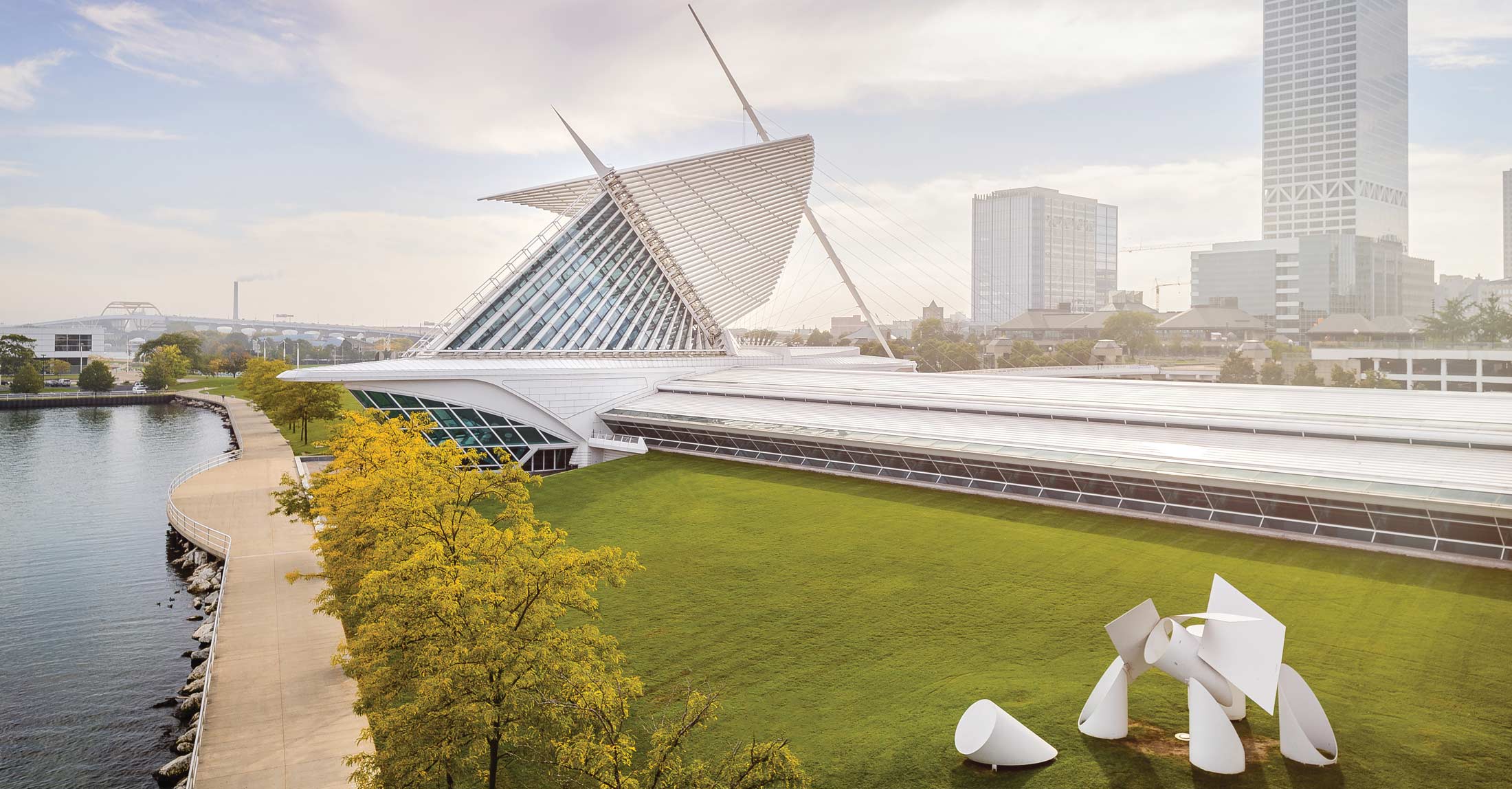
Milwaukee Art Museum Presents Exhibition of Groundbreaking Photography
A golden age of photographic experimentation takes shape in the Milwaukee Art Museum’s presentation of Foto: Modernity in Central Europe, 1918–1945, organized by the National Gallery of Art, Washington, and on view in Milwaukee from February 9 through May 4, 2008. Together with its accompanying film program, Foto explores photography in Germany, Austria, the former Czechoslovakia, Poland, and Hungary as the ultimate modern art form: a democratic response to such hallmarks of modernity as the advent of industrialization and new technologies, the growth of cities and urban lifestyles, and the rise of nationalism.
A survey spanning 27 years, the exhibition explores the myriad uses and forms of photography in 165 original artworks, books, and illustrated magazines from several dozen American and international collections. Foto is divided into eight sections organized thematically, each comparing local differences against a heritage of shared institutions and attitudes towards modernity. A mix of avant-garde, landscape, and documentary photography, along with photomontages and printed materials, appears throughout. Four films displayed within the exhibition space, along with weekly film features by period filmmakers, complete the presentation.
Foto examines photography during a period of unparalleled growth in its popularity, at a time when artists were catalyzed by unprecedented social and political upheaval between the two World Wars. The exhibition locates photographic innovation in places previously overlooked by the standard art historical focus on America, France, Germany, and Russia alone. Photographers across central Europe united to engage the modern world, and to forge a history for their chosen medium, in ways that continue to influence how we interpret both reality and photography in the present day.
Foto is the first exhibition to bring together recognized masters such as El Lissitzky, László Moholy-Nagy, and Hannah Höch with lesser-known contemporaries such as Karel Teige, Jaromír Funke, Stefan Themerson, and Kazimierz Podsadecki, attesting to the range and dynamic output of the era. Lending institutions include the National Gallery of Art, the Metropolitan Museum of Art, the National Museums of Hungary and Poland, and the Albertina Museum in Vienna.
The exhibition is curated by Matthew S. Witkovsky, associate curator of photographs at the National Gallery of Art, and is coordinated at the Milwaukee Art Museum by Lisa Hostetler, associate curator of photographs. Previously shown at the National Gallery and the Guggenheim Museum in New York City, the exhibition tours to the Scottish National Gallery of Modern Art, Edinburgh, from June 7 to August 31, 2008.
EXHIBITION PROGRAMS
Modernity and Tradition: Film in Interwar Central Europe
In addition to four films displayed in the exhibition galleries, Foto is accompanied by an external film program organized by Sonja Simonyi, Department of Film Programs at the National Gallery of Art, Washington. A complete schedule is available from the online press room at www.mam.org.
Gallery Talks
Tuesday, February 12, 1.30 p.m.
Tuesday, March 18, 1.30 p.m.
Tuesday, April 15, 1.30 p.m.
Join Lisa Hostetler, associate curator of photographs and Foto coordinating curator, for an in-depth, 45-minute tour of the exhibition followed by Q&A and discussion.
Picturing the Modern: Photography, Film, and Society in Central Europe, 1918-1945
April 3-4, 2008
This symposium, co-sponsored by the Center for 21st Century Studies, University of Wisconsin-Milwaukee, and the Milwaukee Art Museum, provides an opportunity to revisit a time of unparalleled development in new media and critical thinking that in many ways-including the context of social unrest, violence, and the shadow of war-parallels our own.
EXHIBITION CATALOGUE
The exhibition catalogue, Foto: Modernity in Central Europe, 1918-1945, written by Matthew S. Witkovsky, is published by the National Gallery of Art in association with Thames & Hudson, London and New York. It includes an introduction by Peter Demetz, professor emeritus at Yale University; biographies of the artists; an extensive bibliography; and maps of the region showing the geopolitical shifts of the early 20th century. The 310-page publication with 192 color and 59 black-and-white illustrations is available for purchase ($60 hardcover, $45 softcover) from the Milwaukee Art Museum Store and online at www.mam.org/store.
MUSEUM HOURS
The Museum is open seven days a week from 10 a.m. to 5 p.m., except for Thursdays when the Museum stays open until 8 p.m. (supported by Greater Milwaukee Foundation).
ABOUT THE MILWAUKEE ART MUSEUM
The Milwaukee Art Museum’s far-reaching holdings include more than 20,000 works spanning antiquity to the present day. With a history dating back to 1888, the Museum’s strengths are in 19th- and 20th-century American and European art, contemporary art, American decorative arts, and folk and self-taught art. The Museum includes the Santiago Calatrava-designed Quadracci Pavilion, named by Time magazine “Best Design of 2001.”
Foto is sponsored by the Argosy Foundation. Additional support is provided by the Richard and Ethel Herzfeld Foundation, the Milwaukee Art Museum’s Friends of Art, Christine Symchych, Madeleine and David Lubar, and an anonymous donor.
Digital images available upon request
###
